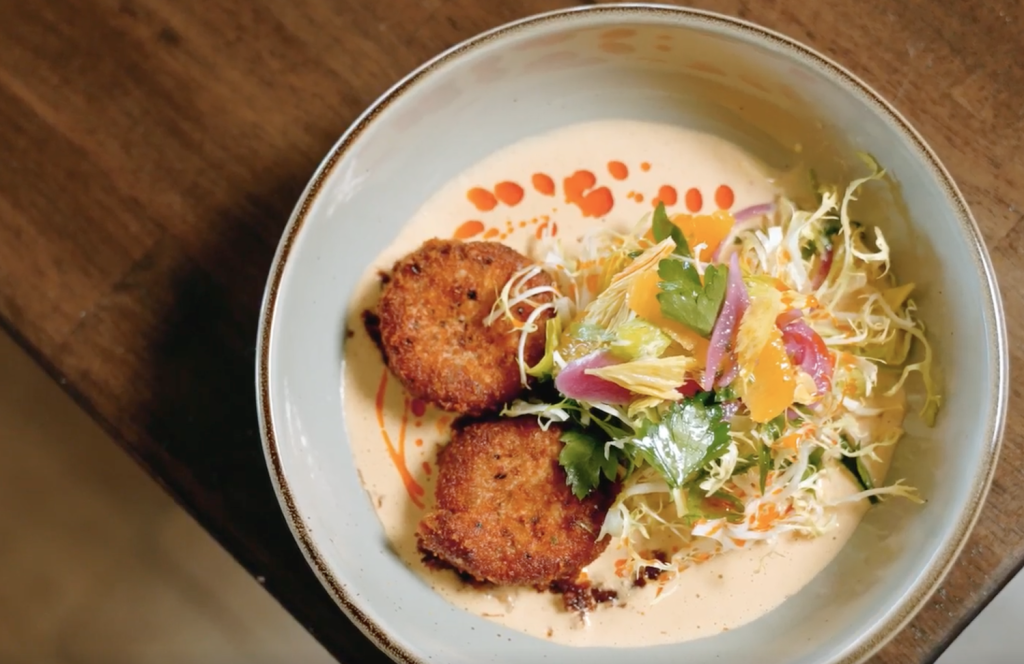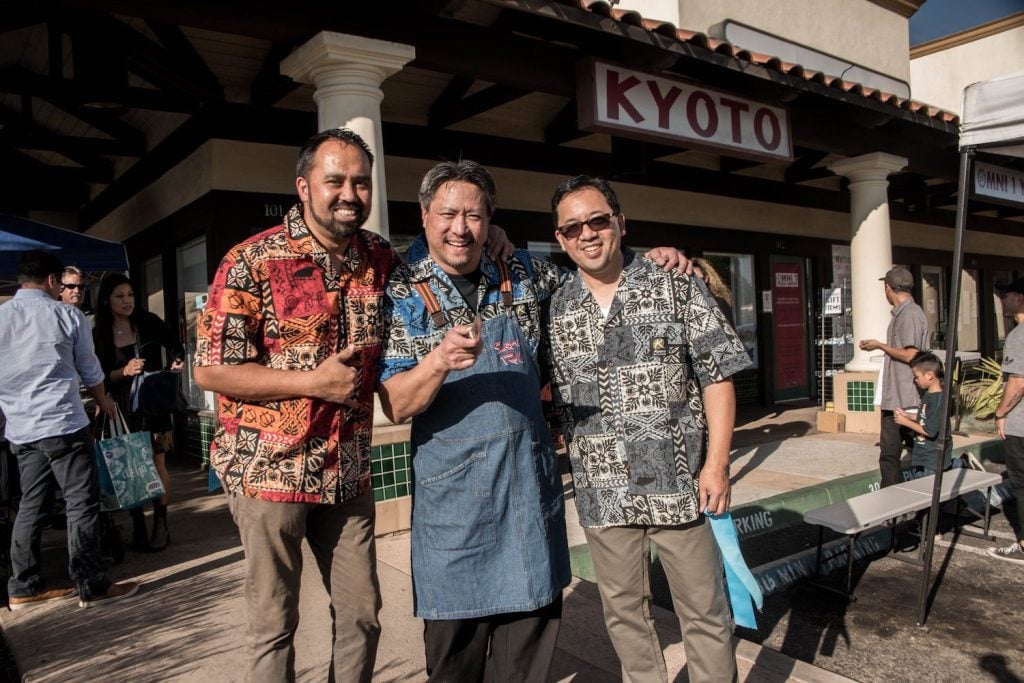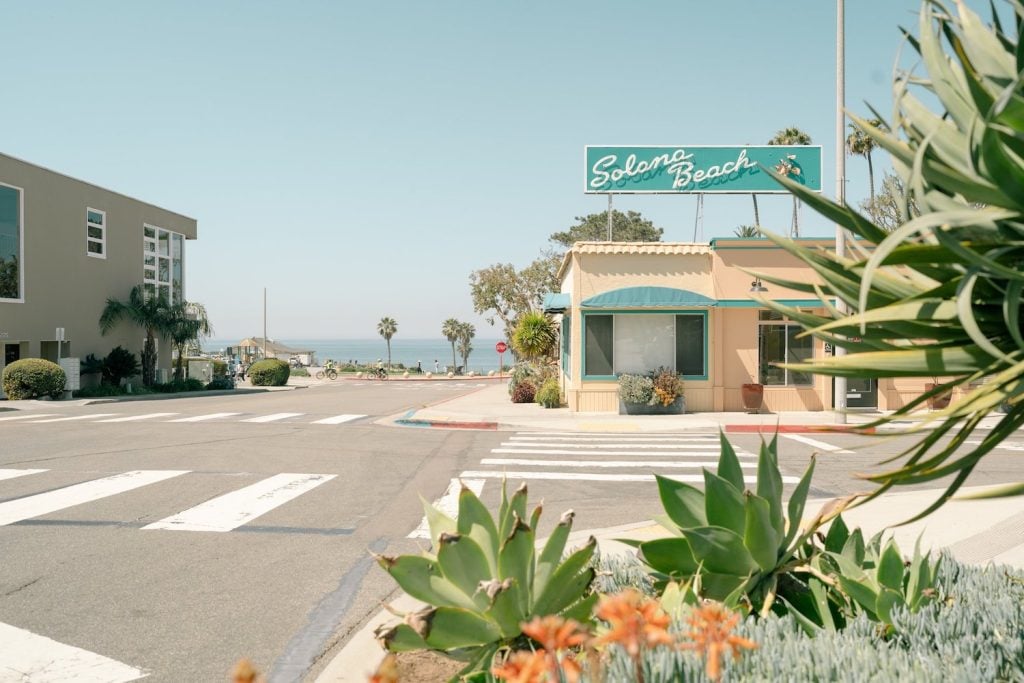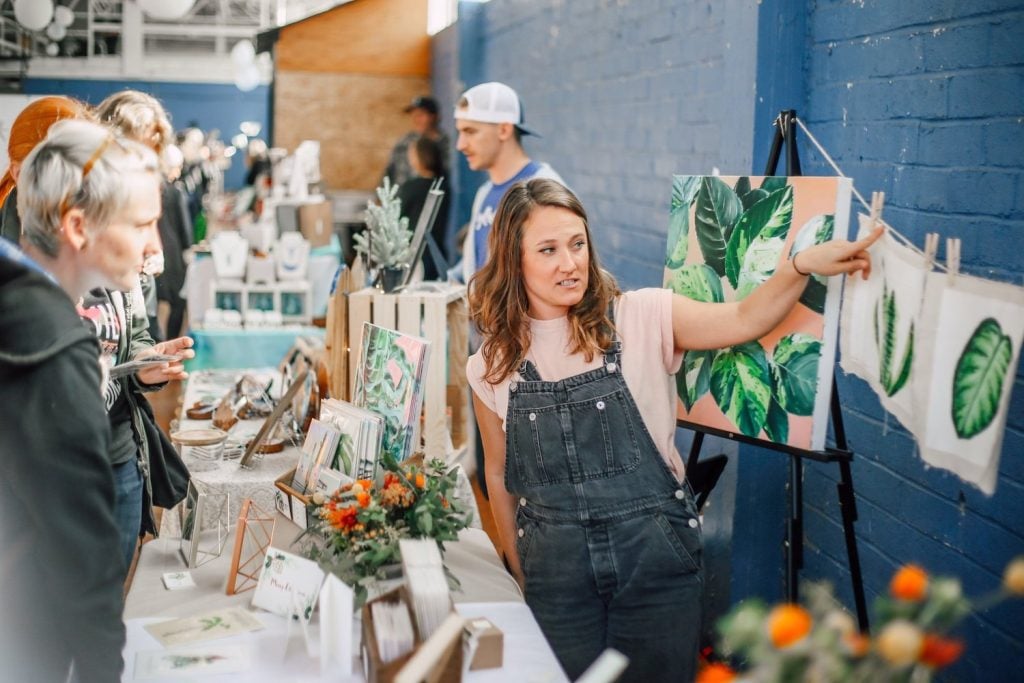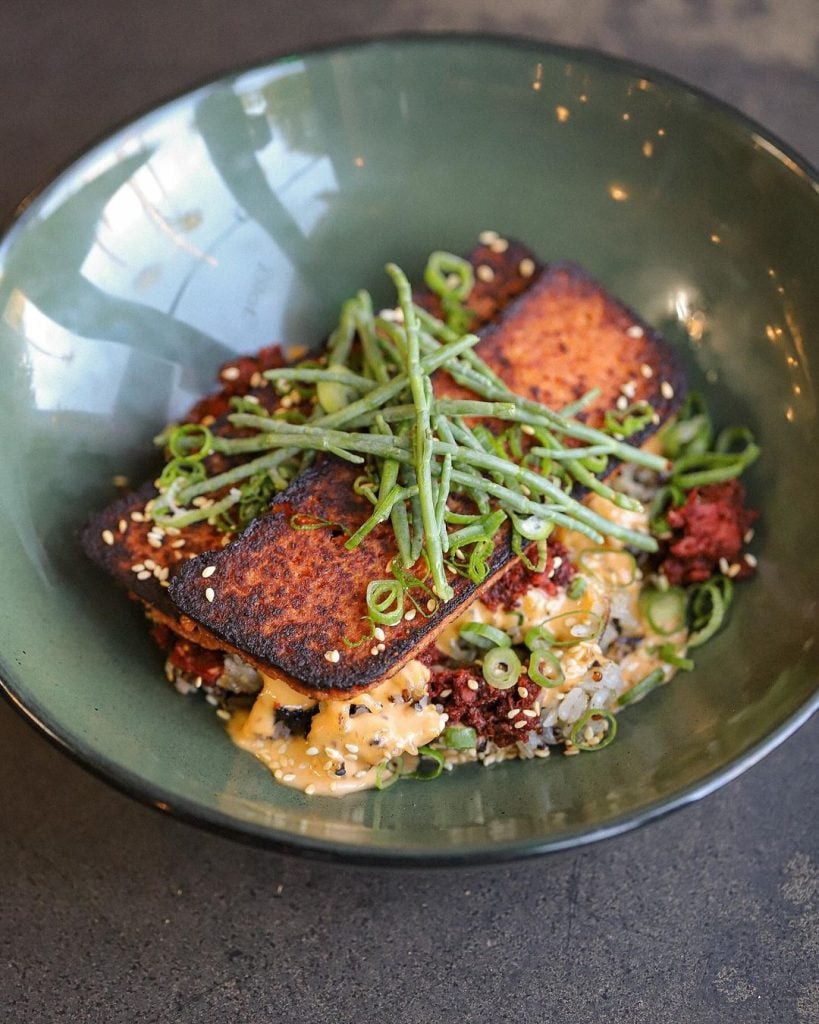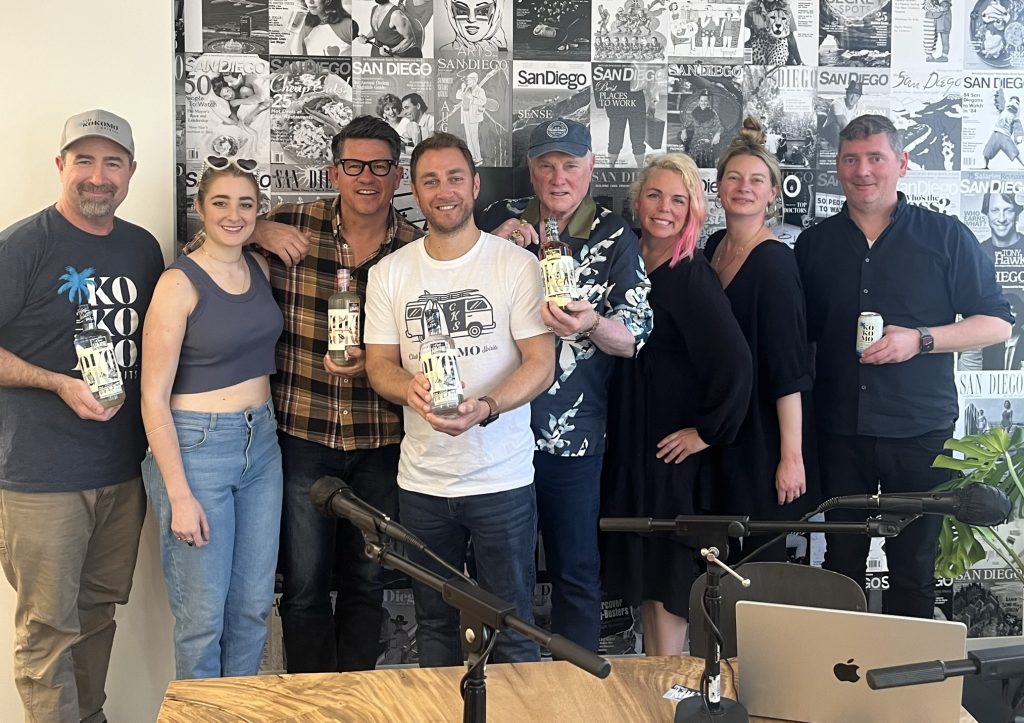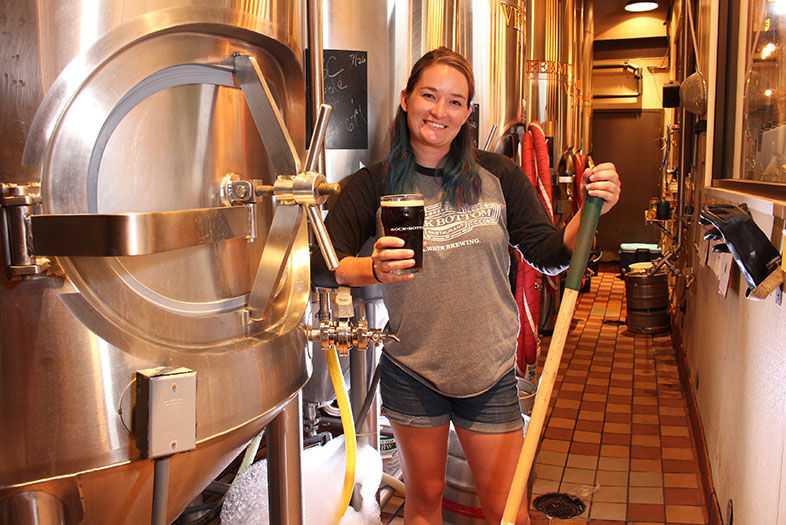Carli Smith didn’t start out wanting to be a brewer. It wasn’t until she volunteered to help out in the brew house at Gordon Biersch in Mission Valley that she discovered how much she really loved beer and the whole process of brewing.
After years of brewing with a couple of San Diego’s most esteemed brewmasters—and working as an assistant—Carli is now enjoying the freedom and creativity that comes with running her own brewing program. Over a few pints of her crisp and refreshing Pump House Extra Pale Ale, I asked Carli about coming up in the San Diego beer trade, why it’s great to work in a food-oriented setting, and how she’s come to develop her own unique vision and brewing style.
Let’s start right at the beginning. How did you first get interested in brewing?
I was a hostess at Callahan’s in Mira Mesa during high school, and then I went to USD. It was just too much of a drive to get up to Mira Mesa during rush hour, so I started looking for a job closer to school. One of the regulars from Callahan’s knew the general manager at Gordon Biersch, so I got an interview, and then I started hosting down there. I was a hostess there for a couple of years and during that time I got to know Doug Hasker. Then I became a busser, and then a server. While I was serving, Doug’s assistant left, and he was looking for some help to do all the non-glamorous stuff, like moving spent grain and hauling bags.
Were you big into beer at that point?
Not to extent that I obviously am now, but I started getting into beer when I studied abroad in Austria—in Salzburg. I started liking beer there, going to the big beer halls, and all that. I definitely got a lot more into it when I started working with Doug. I started working with him on an unofficial basis for about six months before I told him I wanted to be a brewer. I actually remember the exact day I told him. It was the VIP night during Guild Fest and people kept coming up to the booth and asking, “So, Carli, what do you want to do in brewing?” and Doug would jump in and say, “Oh, no. Carli’s going to be an accountant. She’s getting a degree in finance.” So I finally pulled him aside and I said, “Doug, if I can do this and make this work, I want to be your assistant.” And Doug said, “You do?” And I said, “Yeah! Why do you think I come here twice a week?” So, that was November of 2012. They found a budget for me to become his official assistant and I was with him until October 2013—so on an official basis for about ten months. Then I transferred over to Rock Bottom when Marty Mendiola’s assistant left to go work at New English. I had definitely not learned everything about lagers yet, but I thought the new location would be good for me. The Rock Bottom brewery is a little bit smaller and a little bit more manual, so I thought the learning curve would be a lot steeper if I was working on a smaller system, doing smaller batches, and also doing a lot more ales, which are a lot quicker. Also, there was an opportunity here at Rock Bottom to work on a lot more different styles. At the time—it was before Gordon Biersch was able to do any IPAs or hoppy beers—they couldn’t do anything that wasn’t Reinheitsgebot [within the parameters of the German purity laws that restrict ingredients and brewing techniques]. We also didn’t get to delve into any recipe formulation at Gordon Biersch, so I thought I’d really learn another side of brewing coming over here to Rock Bottom.
And that was while Marty was doing his own recipes here, right?
Yes. We got to do all of Marty’s recipes while I was with him, which was from October 2013 until January of 2015. That’s when Marty left to do Second Chance and they promoted me to take over.
What’s the one thing that sticks out in your mind as the best thing Doug taught you, or that you learned from him?
Probably multi-tasking. How to take advantage of your time and how to make sure you’re doing multiple things at once. And also I learned a real appreciation for clean beer. I learned that from Doug and also from having experience with German-style beers.
Do you think that starting your beer education with lager styles—which most brewers will say are really the hardest styles to brew—was advantageous? Was it good to start at the more difficult end of the spectrum?
Yeah, and I also think it has shaped me in terms of my brewing style. My main goal with my brewing style is to have balance—even in my IPAs, which are definitely hoppy—but I don’t go overboard on anything. My Mosaic IPA, for example, has Mosaic but also some Citra. The 100% single-hop beers are not my favorite. I feel like they’re very one-sided and they don’t have a lot of depth. So I like to have a lot of balance and I feel like I learned that by starting with German-style beers.
How about something that stands out in your mind about your time working with Marty?
With Marty, he was always very creative with brewing. He described brewing as an art form, and so I learned about looking at beer that way. Especially with recipe formulation, Marty would say, “Well, let’s try it with this… Just take good notes, remember what you did, and see if it works.” So, the way I formulate my recipes now, I definitely learned from Marty. Basically, I learned all of my brewing tricks from Doug and Marty.
You mentioned the development of your brewing style. What else characterizes your brewing style?
Well, I really like being a brewpub. I like having people who are coming in not just to try the beers, but also to have a meal. I feel like in a tasting room, you need to have those “wow factors” and those crazy beers, because that’s what’s going to bring the people in. But at a brewpub, I’m really able to perfect styles. One of my favorite beers, for example, is an English-style brown ale. Now, that’s not going to be a huge seller at a tasting room—it’s not one of those beers that wows you—but it’s a really good style that goes with pizza, and burgers, and pasta. It goes with everything. So it’s a beer that I’m able to brew a lot and keep on tap here. Plus it’s my favorite, so I get to brew it all the time!
I also like when people come in and they look at my beer board and they say, “Oh! I want to try this and I want to try that.” I try to always have something available for everybody. Sometimes I struggle to keep the Belgian beers on, because I really don’t like Belgian beers. It’s hard being a brewer and having to brew beers for other people!
And you also have to think about keeping your beer food friendly, right?
Yes. I’m not going to always have on something like a triple IPA, which is going to wreck your palate and make it so you’re not going to be able to taste anything after that. But being in San Diego, I do brew some of those things periodically. For Cinco de Mayo, I do a three-pepper lime ale.
I’m not going to always have on something like a triple IPA, which is going to wreck your palate and make it so you’re not going to be able to taste anything after that.
Do you get to do all your own recipes, or do you have to do some that are the corporate recipes or house recipes?
No. All the beers are my own recipes. What we have to have is a Kolsch style, we have to have a wheat beer and a red, we have to have an IPA, and we have to have a dark beer. Then there are a whole bunch of other beers that I can do. The Kolsch, the red, and the Mosaic IPA stay the same all the time, and the wheat and the dark beers rotate. The IPA is the hardest, because people are drinking it faster than I can brew it! I’m lucky if I have a 16-barrel batch for three weeks—and that’s even when I have other hoppy beers on: I’ve also got a double IPA, an extra pale ale, a red IPA, and I have the Hop Bomb IPA. And they’re still drinking mostly the Mosaic IPA! It’s not necessarily a bad problem to have—it’s good that your beer is popular, but it’s a little bit of a struggle. I can’t dedicate two of my six fermenters to the same beer.
So, the IPA is the big seller here. What’s second?
The red and the blonde kind of duke it out. We have a lot people who come in who aren’t necessarily big craft beer drinkers. So I tell our servers to recommend the red and the blonde because they’re really good entry beers for non-craft-beer drinkers.
A lot of people are under the misconception that Rock Bottom is not a “real” craft brewery. They think of it as just a franchise or a chain. But you do all your own recipes here and the recipes are all different at every Rock Bottom location. Do you find you still struggle with the perception of Rock Bottom in the craft community?
Yes!
What do you most want people to know about your place?
I brew all the beers here. They’re all my recipes. They’re made by me and my assistant—there’s one other person that works in the brewery with me. I touch everything that goes into the beer. We’re corporate in the respect that we’re not independent, but the corporation that owns us has no input on our beer at all. They let us do whatever we want to do.
And the other Rock Bottoms are the same?
Yup. Every Rock Bottom has its own brewer, which is kind of a struggle sometimes when I go to beer festivals and people say to me, “Oh, yeah! Rock Bottom in Campbell or Rock Bottom in Long Beach, I’ve been there.” And I have to say, “Yeah, but you’ve probably never had these beers because these are my beers.” I try to explain to people that we’re kind of like a bigger version of Pizza Port, where each location has a brewery in it, but they all have the same pizza.
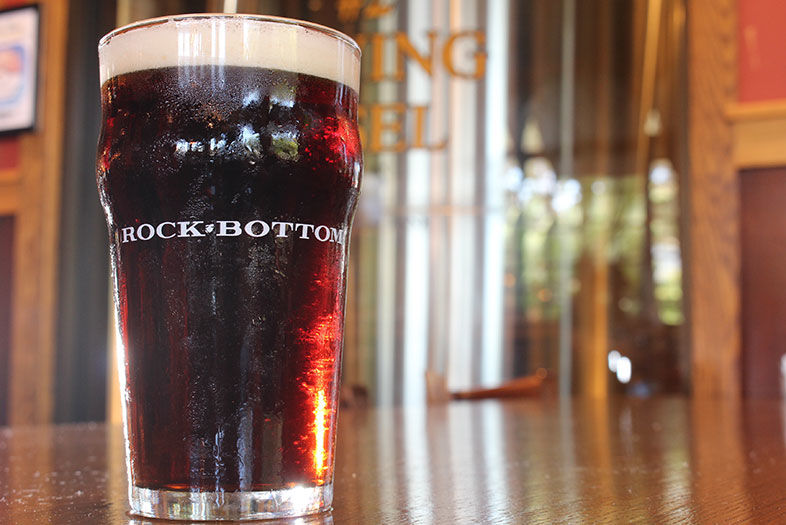
Have a Beer with Rock Bottom Brewer Carli Smith
Rock Bottom’s Longboard Brown. | Photo: Bruce Glassman
Rock Bottom’s Longboard Brown. | Photo: Bruce Glassman
Do you ever get to just go crazy with a beer or a recipe?
I did a collaboration with Intergalactic Brewing that just got released. It was supposed to be a 6.5% IPA, but I forgot that I was playing around with our recipe on our recipe program and I wanted to see what this would look like if it was an Imperial IPA. So when I ordered my grain and milled in, I had forgotten to switch it back. So I milled in enough grain for an imperial and we wound up with a 9.3% imperial IPA! It’s called The Giant Hurtling Space Rock of Doom Imperial IPA.
You’ve been part of the San Diego brewing scene now for a number of years. Which breweries or beers do you admire the most?
I love Karl Strauss. I love Paul Segura. I love everything that he does over there. And AleSmith Nut Brown. I think that was my very first favorite craft beer—I think it still is to this day. Sometimes I’ll go and get a bomber and taste it just to try to figure out how I want to change or advance my brown recipe—to see ways that I can improve it.
What do you think AleSmith Nut Brown has that your brown hasn’t achieved yet?
There’s a certain roundness and fullness in the body while it stays really light on the finish. And that to me is the epitome of a great brown beer. It should be a full flavored beer, it’s got caramel and nutty flavors, but it still stays really light. I think its probably going to be that one beer style that I’m always going to nit-pick. I’m always going to be changing it. It’s the one that I’m always going to think I can do better.
What else is left to do? What are some things you still want to brew?
We don’t really have the space for a lot of barrels, but I do have a couple of bourbon barrels with imperial porter aging in them. And I have one French chardonnay barrel… And two years ago, as a “holiday bonus” from corporate, they just drop-shipped everybody Jim Beam barrels—empty, of course! We had no idea it was coming; it just showed up. So we tried to figure out what we had that would stand up to the bourbon. We didn’t have anything like an imperial porter in the tanks. The only thing we had that was close to being ready was an oatmeal stout; the Black Seal Oatmeal Stout. Marty and I just looked at each other and said, “Alright then, I guess it’s the oatmeal stout that’s going in.” It actually turned out really, really nice. I released it last winter and it was nice because you got a lot of the oak character along with bourbon, but I also got this really cool dark cherry flavor, which was surprisingly nice.
“It’s beer! Drink what you like! Don’t care about what other people are telling you.” Life is too short to drink beer you don’t like to drink. Beer is beer.”
How about doing sours? Do you like sours?
Not really. I’ve tried, but I don’t think I‘m geared for sours. And that’s okay.
Yeah. You can’t always like everything.
You know, I get a lot of people that come in who are non-craft-beer-nerds—because we are a restaurant—and they come up to me and they say, “You know, I’ve tried to like the hoppy beers…” and I say to them, “Why are you trying to like anything? It’s beer! Drink what you like! Don’t care about what other people are telling you.” Life is too short to drink beer you don’t like to drink. Beer is beer. There’s no hierarchy of which beer is more “advanced” than another beer. No beer has a trump card over another one.
So, you feel that there’s a certain aspect of what you’re doing here that is providing a sort of craft beer education for some people?
A little bit, yeah. It’s fun to get a lot of the people who say they aren’t necessarily beer drinkers or that they don’t like beer. I very firmly believe that there is a beer for everybody. There are so many different styles and so many different flavors, there’s definitely a beer for everyone. My friends, for example, who like white wine: I’ll have them try a saison or a Belgian beer. And my friends who like red wine: I’ll have them try something that’s dark and malty. It’s fun to get people who say, “I don’t like beer,” so I can say, “Just give me a chance! There is a beer for you!”
Rock Bottom Restaurant & Brewery, 8980 Villa La Jolla Dr, La Jolla, CA 92037
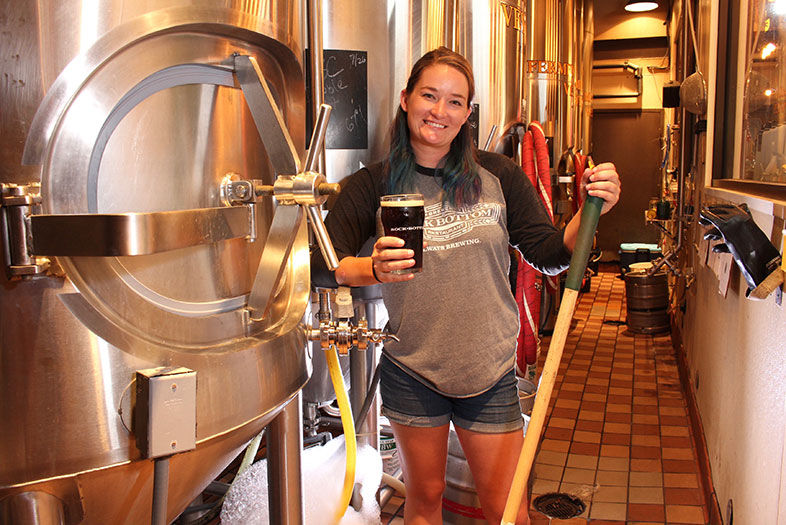
Have a Beer with Rock Bottom Brewer Carli Smith
Rock Bottom Brewmaster Carli Smith. | Photo: Bruce Glassman
